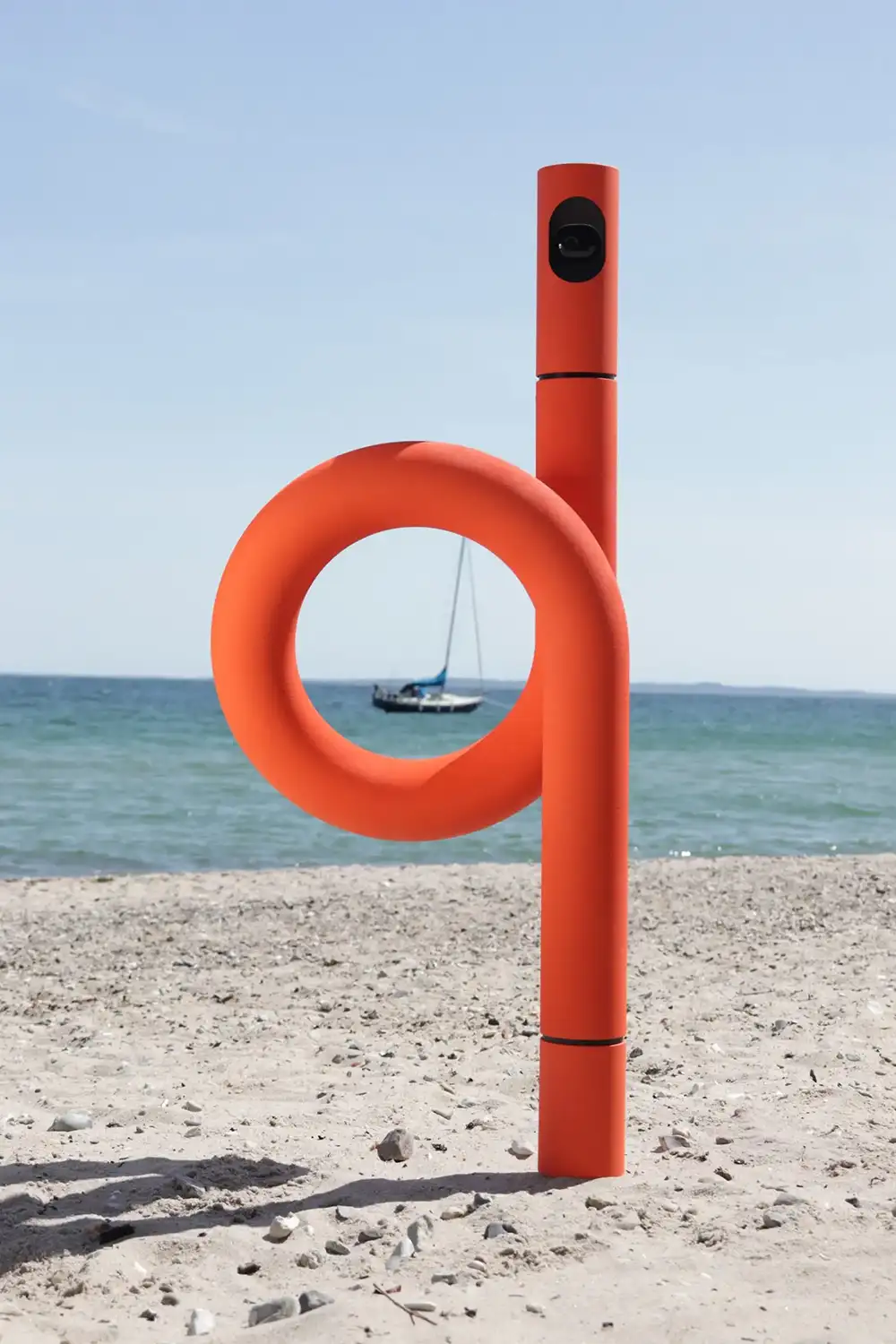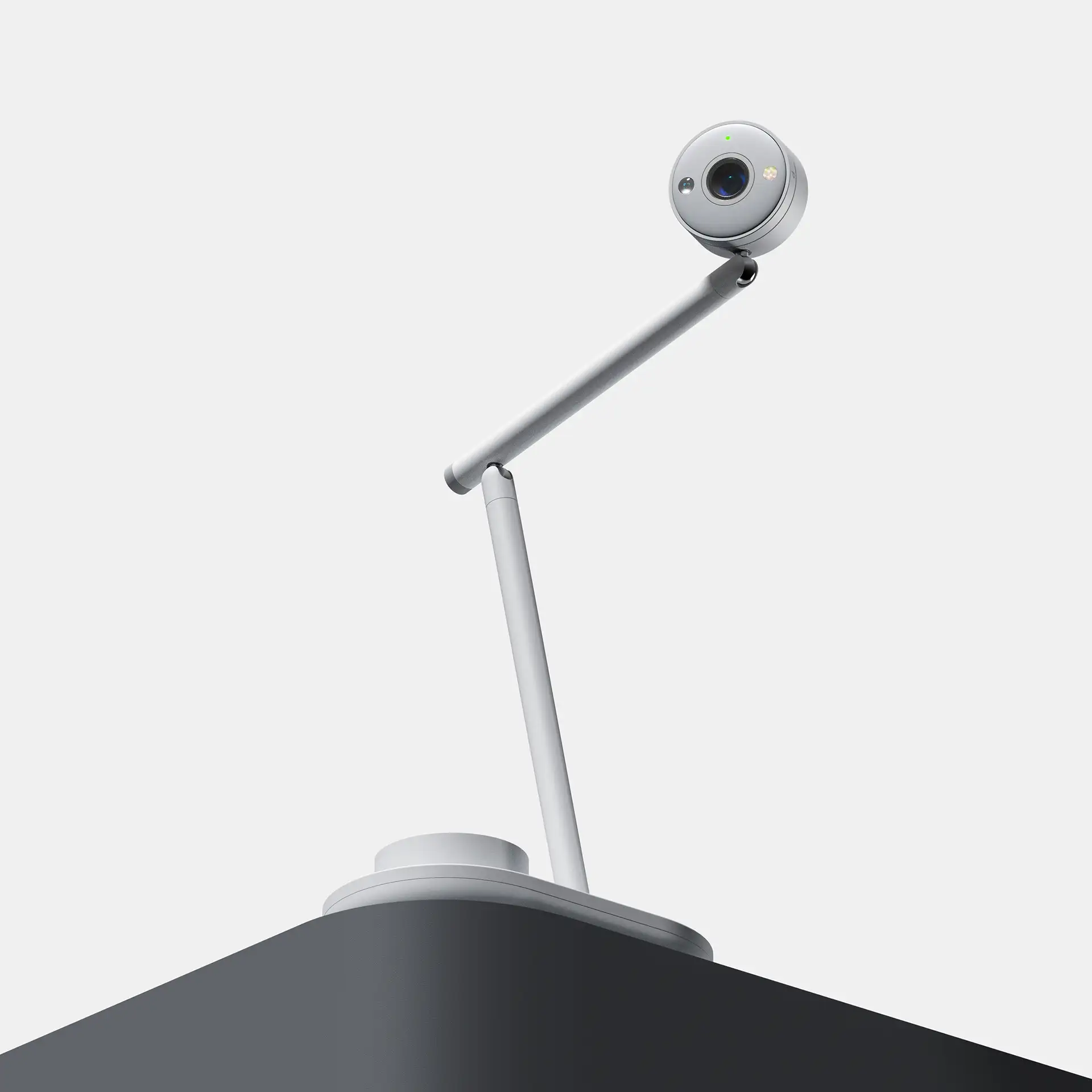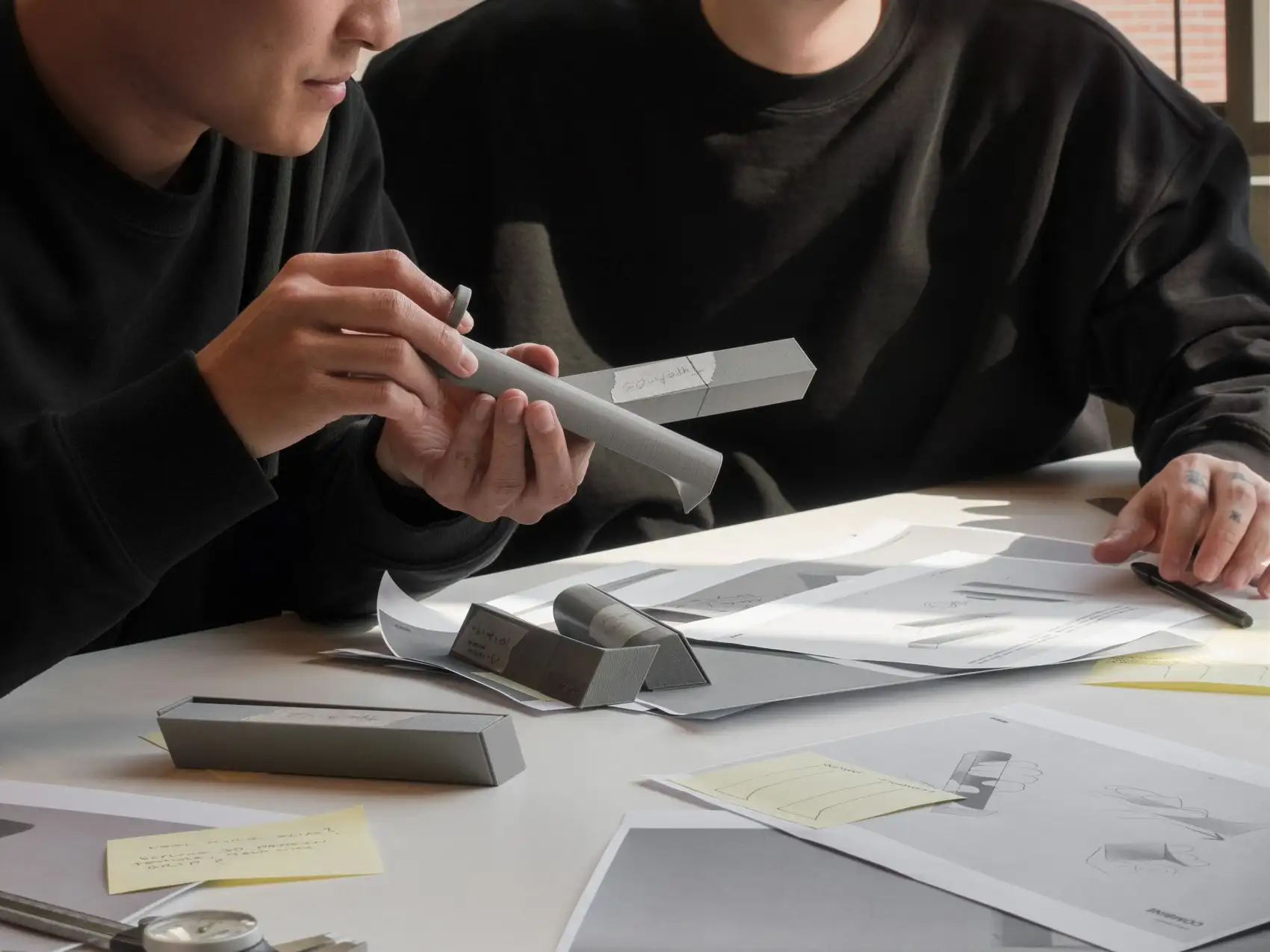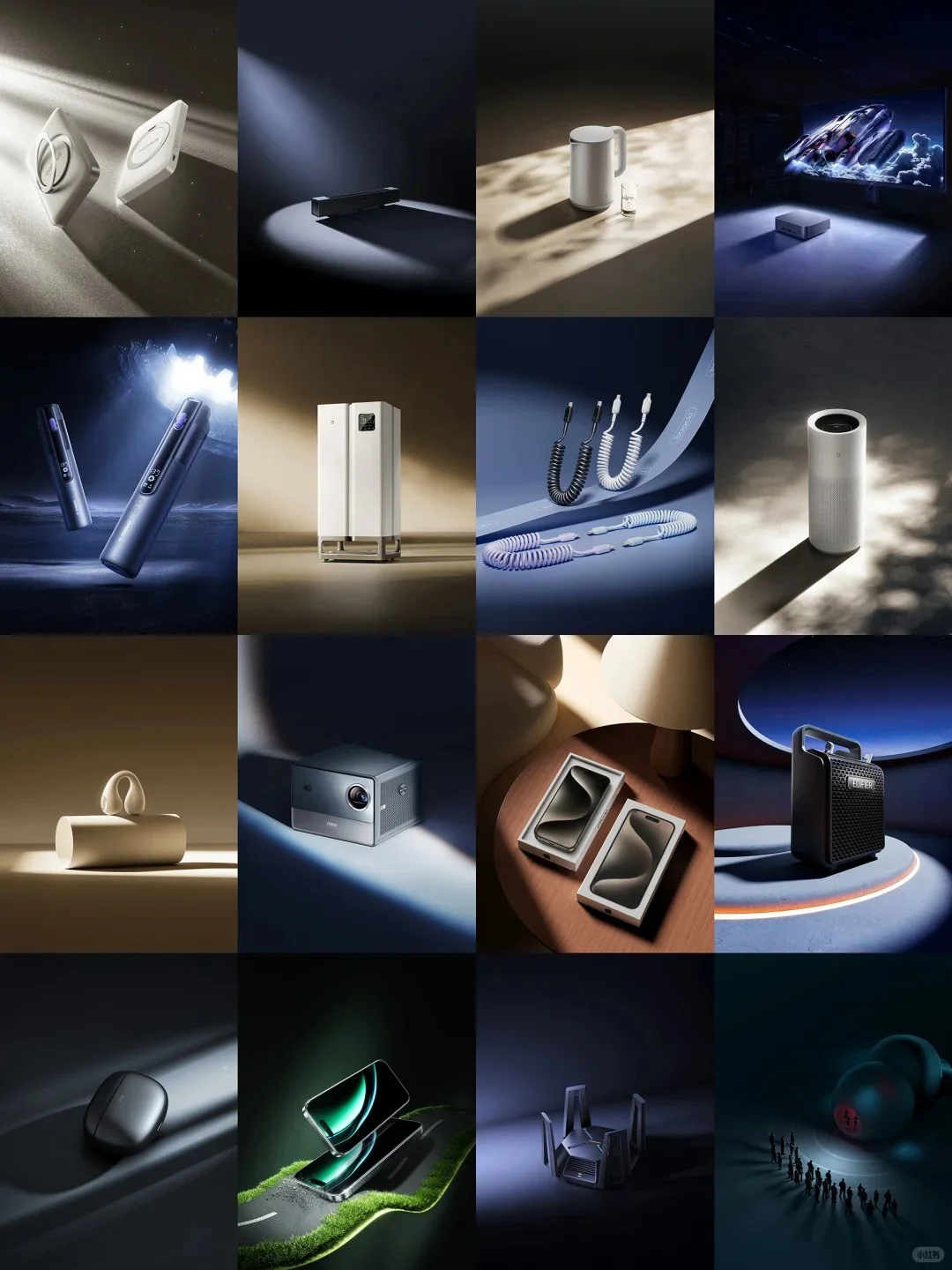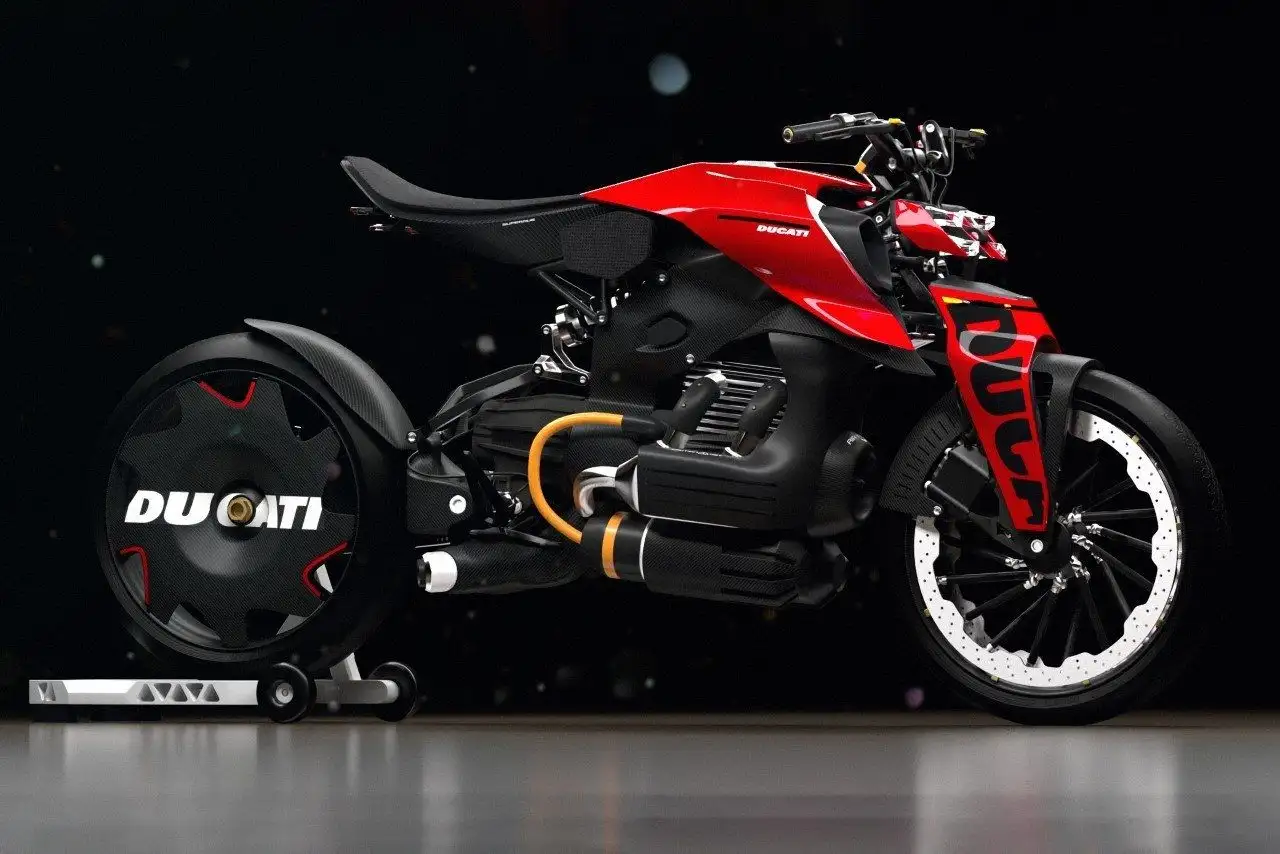NINEIDEA:在当今全球化与创新驱动的时代,工业设计已成为推动产业升级、提升产品竞争力以及塑造城市品牌形象的核心力量。一座城市的工业设计水平,不仅反映其制造业的发达程度,更彰显了城市的创新活力、文化底蕴以及对未来发展的前瞻性布局。中国,作为全球制造业大国,众多城市在工业设计领域积极探索、竞相发展,逐渐形成了各具特色与优势的区域格局。其中,中国十大工业设计城市凭借自身独特的资源禀赋、产业基础、政策支持以及人才汇聚等因素,在工业设计的赛道上脱颖而出,成为引领全国工业设计发展的重要力量。
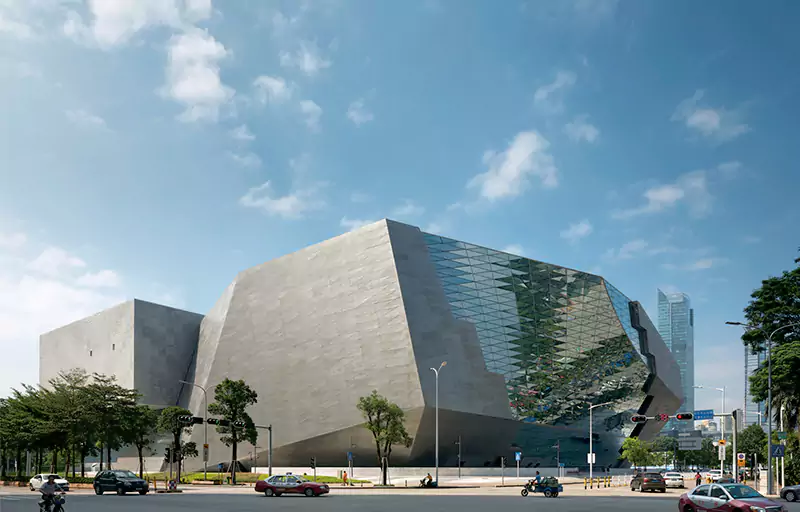
这些城市涵盖了沿海发达地区的经济重镇,也包括内陆地区的新兴创新之都。它们的发展路径和模式各不相同,却共同勾勒出中国工业设计的多元风貌与蓬勃态势。深入剖析这十大工业设计城市的优劣势,对于理解中国工业设计的整体格局、把握行业发展趋势以及为各城市制定针对性的发展策略,都具有至关重要的意义。
接下来,我们将对深圳、上海、北京等十大工业设计城市进行逐一解读,从政策环境、产业基础、人才资源、文化特色等多个维度展开综合评比,揭示它们在工业设计领域的独特魅力与发展挑战。
1. 深圳

1.1 优势
深圳,作为中国改革开放的前沿阵地与创新之都,在工业设计领域展现出强大的竞争力。政策扶持力度堪称典范,作为最早的经济特区以及大湾区建设的排头兵,政府为工业设计产业量身定制了一系列优惠政策,从资金支持到场地补贴,从人才引进到项目奖励,全方位助力设计企业茁壮成长。
其设计产业集聚度之高令人瞩目,各类工业设计机构如繁星璀璨,约达 2.2 万家,其中工业设计专业公司就有 1400 多家。2022 年,工业设计总产值飙升至 450 亿元,强大的产业集群效应使得设计资源高度整合,企业间的交流与合作频繁,创新灵感如泉涌。
丰富多样的设计活动更是为深圳增添了浓厚的设计氛围。深圳国际工业设计大展作为业界盛会,吸引了全球目光,不仅为国内外设计师搭建了交流平台,更为深圳的设计成果走向世界提供了舞台。同时,深圳凭借其开放包容的城市文化与良好的发展机遇,吸引了大量国内外优秀设计人才汇聚,为产业发展注入源源不断的创新活力。
1.2 劣势
然而,深圳在发展过程中也面临一些瓶颈。土地资源的紧张成为制约设计企业进一步扩张的关键因素。随着城市的快速发展,土地成本不断攀升,设计企业的办公场地与生产空间受限,这在一定程度上阻碍了企业规模的扩大与创新发展的步伐。此外,相较于一些历史悠久的文化名城,深圳的文化底蕴相对薄弱。在将传统文化元素深度融入工业设计,打造具有深厚文化内涵的产品方面,深圳可能稍显不足,这在一定程度上影响了产品在文化层面的独特性与吸引力。
2. 上海

2.1 优势
上海,作为国际化大都市,在工业设计领域的优势得天独厚。其国际化程度首屈一指,作为国际经济、金融、贸易中心,吸引了众多国际设计大师与工业设计领军企业纷纷入驻。在这里,东西方文化相互交融,前沿设计理念与潮流趋势在此碰撞,为上海的工业设计注入了国际化的视野与创新活力。
上海拥有雄厚的产业基础,新一代信息技术、智能制造装备、生物医药等重点产业蓬勃发展,为工业设计提供了广阔的应用场景与实践平台。同时,高校资源丰富,东华大学、上海大学等高校的设计专业在全国名列前茅,每年为设计行业输送大量高素质专业人才,为产业发展提供了坚实的人才保障。
2.2 劣势
但上海的工业设计发展也并非一帆风顺。高昂的商务成本成为企业发展的一大负担,无论是写字楼租金还是人力成本,都处于较高水平,这无疑增加了设计企业的运营压力与人才生活成本,对一些初创企业和小型设计公司的发展形成了一定阻碍。此外,由于大量优秀设计企业汇聚于此,市场竞争异常激烈,企业需要在众多强劲对手中脱颖而出,面临着巨大的挑战,这对企业的创新能力与市场拓展能力提出了更高要求。
3. 北京
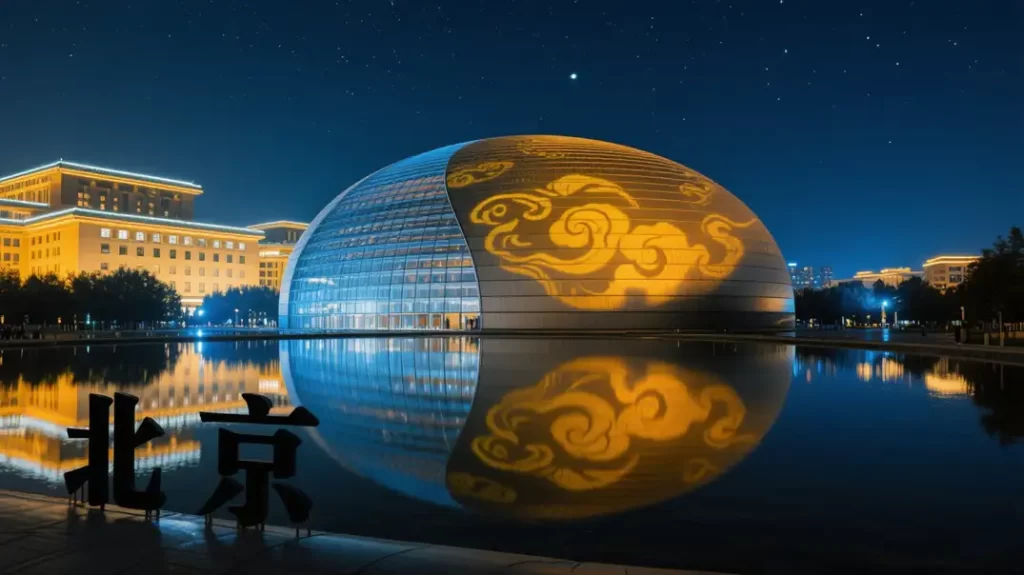
3.1 优势
北京,作为中国的首都,在工业设计领域拥有独特的优势。丰富的教育资源是北京的一大法宝,清华大学、中央美术学院等顶尖高校汇聚于此,这些高校在工业设计领域的教学与研究水平位居全国前列,每年培养出大量具有创新思维与扎实专业技能的设计人才,为北京的工业设计产业提供了源源不断的人才动力。
北京的科技实力同样不容小觑,小米、联想等众多科技头部企业扎根于此,强大的科技研发能力为工业设计提供了坚实的技术支撑。在这里,设计与科技紧密结合,催生出众多具有创新性与前瞻性的产品。同时,北京作为历史文化名城,拥有深厚的文化底蕴,丰富的传统文化元素为工业设计提供了取之不尽的灵感源泉,设计师们能够轻松地将传统文化与现代设计理念相融合,打造出独具特色的产品。
3.2 劣势
然而,北京的产业结构相对多元,非设计类产业在经济中占据较大比重,这在一定程度上可能会分散对工业设计的关注和资源投入。此外,北京的城市功能定位十分广泛,涵盖政治、文化、国际交往等多个方面,工业设计在城市发展战略中的优先级可能受到一定影响,与一些以工业设计为重点发展方向的城市相比,资源的集中程度可能相对较低。
4. 重庆

4.1 优势
重庆,作为西部唯一的 “设计之都”,在西部地区的工业设计领域发挥着引领与示范作用。其工业基础扎实雄厚,以 “33618” 现代制造业集群体系为依托,涵盖汽车、电子信息、装备制造等多个产业领域,为工业设计提供了丰富多样的应用场景与广阔的市场空间。
政府对工业设计产业高度重视,全力推进 “设计之都” 的建设,通过政策引导、资金扶持等多种方式,积极培育工业设计企业,建成了多个国家级、市级工业设计中心,形成了良好的产业发展生态。
4.2 劣势
但重庆地处内陆,与沿海城市相比,在国际交流与合作方面存在一定的地理劣势。获取国际前沿设计资讯、引进国际设计资源的渠道相对有限,这在一定程度上影响了重庆工业设计的国际化发展进程。同时,相较于东部发达城市,高端设计人才相对匮乏,人才的短缺限制了重庆工业设计在创新能力与设计水平上的进一步提升。
5. 广州
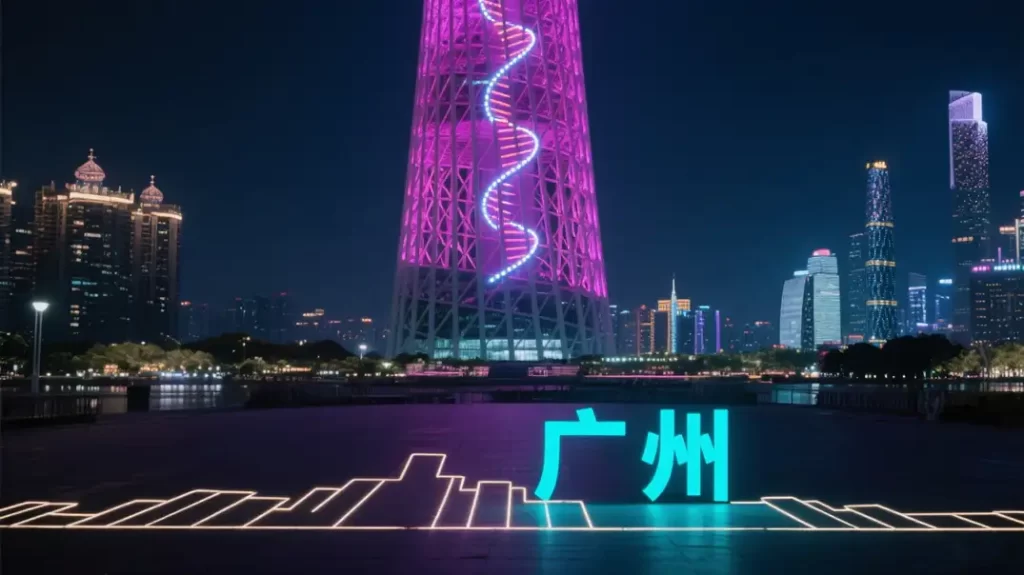
5.1 优势
广州,作为中国工业设计的重要发祥地之一,在工业设计领域有着深厚的历史底蕴与扎实的发展基础。已成功创建全国首批国家工业设计研究院,彰显了其在工业设计领域的权威性与专业性。在汽车设计、家居设计等细分领域成果丰硕,走在全国前列,众多知名汽车品牌与家居企业的总部或设计中心坐落于此,形成了具有特色的产业集群。
此外,广州拥有多所设计院校,如华南理工大学、广州美术学院等,这些院校在工业设计教育方面具有丰富的经验与卓越的教学成果,为广州的工业设计产业培养了大量优秀人才。
5.2 劣势
然而,在设计的国际化水平方面,广州与深圳、上海等城市相比仍存在一定差距。尽管在国内市场具有较高的知名度,但在国际设计舞台上的影响力有待进一步提升。同时,广州的工业设计产业在整体品牌塑造与推广方面还需加强,缺乏具有国际影响力的设计品牌,这在一定程度上限制了广州工业设计产业的全球化发展步伐。
6. 杭州

6.1 优势
杭州,以其独特的创新生态与文化氛围,在工业设计领域崭露头角。拥有 21 家国家级工业设计中心,数量位居全国领先地位,彰显了其在工业设计领域的强大实力。在 AI 与机器人设计、时尚设计、创意设计等领域表现突出,紧跟科技与时尚潮流,不断推出具有创新性与前瞻性的设计作品。
杭州作为中国国际动漫节的永久举办地,文创产业蓬勃发展,为工业设计提供了丰富的创意灵感与文化元素。同时,杭州良好的创业环境与政策支持,吸引了众多设计人才与创新企业,形成了活跃的设计创新氛围。
6.2 劣势
不过,杭州的制造业规模和基础相较于一些传统工业城市略显薄弱。工业设计的发展离不开制造业的支撑,制造业规模的相对不足可能会限制工业设计与制造业的深度融合,影响设计成果的产业化进程。此外,在设计人才结构方面,杭州虽然人才总量丰富,但部分高端领域的专业人才仍相对短缺,如具有国际视野的工业设计领军人才、跨学科复合型设计人才等,这在一定程度上制约了杭州工业设计向更高水平发展。
7. 苏州

7.1 优势
苏州,作为中国制造业强市,在工业设计领域同样成绩斐然。雄厚的制造业基础是苏州的核心竞争力,2021 年规模以上工业总产值突破 4 万亿元,位居国内第一,涵盖电子信息、机械制造、纺织服装等多个产业领域。庞大的制造业体量为工业设计提供了广阔的市场需求与应用空间。
苏州在工业设计领域的建设成果显著,累计建成国家级工业设计中心 9 家,数量占全省 37.5%,位居全省第一,形成了以国家级工业设计中心为引领,众多省市级设计中心协同发展的良好格局,推动了工业设计产业的集聚与升级。
7.2 劣势
然而,苏州的工业设计也面临一些挑战。传统制造业在苏州的产业结构中占比较高,尽管制造业基础雄厚,但传统产业的创新转型压力较大,工业设计在推动传统产业升级方面面临一定困难。同时,苏州就业人口素质整体水平有待提高,科研创新基础相较于一些一线城市相对薄弱,这在一定程度上影响了工业设计的创新能力与高端人才的引进和留存。
8. 成都

8.1 优势
成都,作为西南地区的重要城市,在工业设计领域展现出独特的魅力与潜力。丰富的文化资源是成都的一大特色,古蜀文化、三国文化等多元文化在此交融,为工业设计提供了丰富的创意源泉。设计师们能够从这些深厚的文化底蕴中汲取灵感,将传统文化元素巧妙地融入现代设计中,打造出具有地域文化特色的产品。
近年来,成都的电子信息、航空航天等产业发展迅速,为工业设计提供了广阔的市场空间。同时,政府对设计产业的支持力度不断加大,出台了一系列优惠政策,积极营造良好的产业发展环境,吸引了众多设计企业和人才入驻。
8.2 劣势
但成都的工业设计产业在规模和影响力方面与东部发达城市相比仍存在一定差距。在全国乃至国际设计舞台上,成都的设计品牌和作品的知名度相对较低,缺乏具有广泛影响力的设计领军企业和标志性设计成果。此外,成都在设计人才的吸引和培养方面还需进一步加强,高端设计人才的短缺限制了工业设计产业的快速发展。
9. 武汉
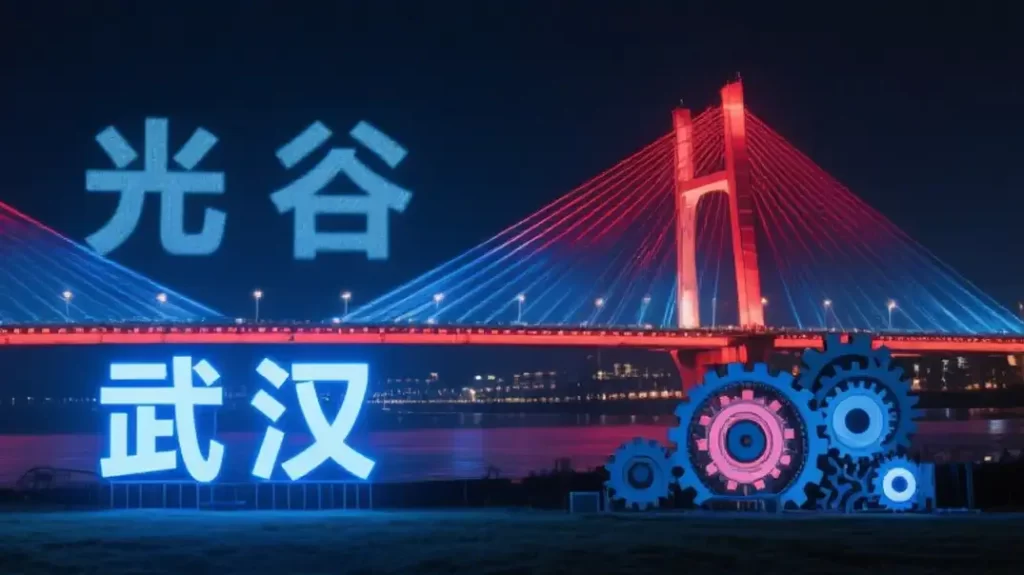
9.1 优势
武汉,凭借其丰富的高校资源与坚实的工业基础,在工业设计领域占据重要地位。武汉高校云集,华中科技大学、武汉理工大学等众多高校开设了工业设计相关专业,每年培养大量设计人才,为武汉的工业设计产业提供了充足的人才储备。
作为中国重要的工业基地,武汉在汽车、机械、电子等领域产业发达,为工业设计提供了丰富的实践场景与应用对象。同时,武汉获批 “设计之都”,城市对工业设计的重视程度不断提高,积极举办各类设计活动,营造了良好的设计氛围。
9.2 劣势
然而,武汉在工业设计的市场化和商业化方面与沿海经济发达城市相比存在一定差距。设计成果的转化效率相对较低,部分优秀设计作品未能有效推向市场,实现商业价值。此外,武汉的工业设计产业在国际化水平方面有待提升,与国际设计前沿的交流与合作不够紧密,在国际设计舞台上的话语权相对较弱。
10. 天津
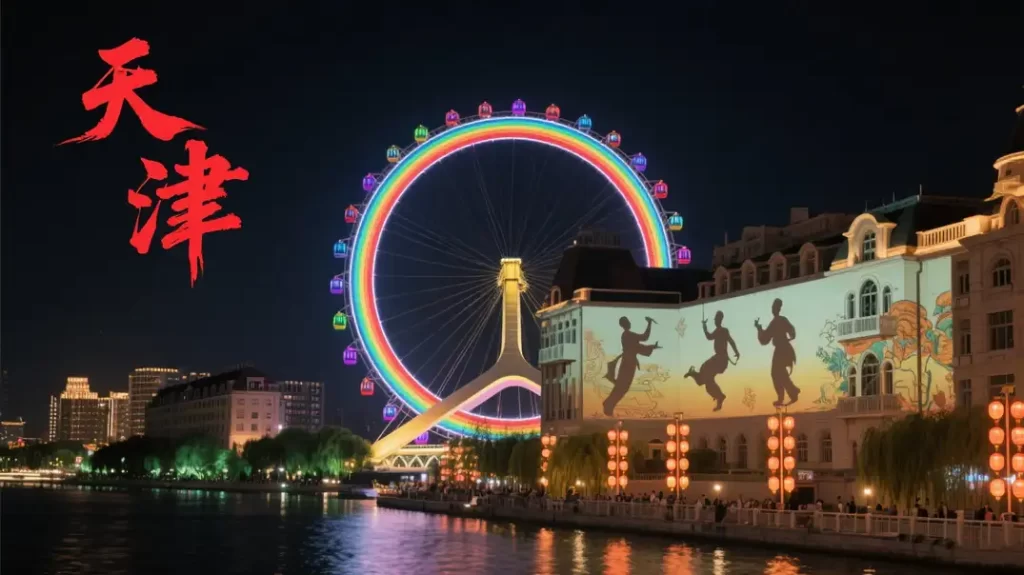
10.1 优势
天津,作为北方重要的工业城市,在工业设计领域具有自身的优势。扎实的制造业基础为工业设计提供了广阔的发展空间,天津在航空航天、装备制造、汽车等领域实力雄厚,为工业设计提供了丰富的应用场景与产业支撑。
天津拥有天津工业大学等高校,在纺织、服装等领域的设计教育具有一定特色,培养了一批专业设计人才。同时,天津作为历史文化名城,具有独特的地域文化,为工业设计注入了丰富的文化内涵。
10.2 劣势
但天津的工业设计发展也面临一些困境。工业设计的创新活力和知名度相对较低,在全国工业设计领域的影响力有待进一步提升。在吸引和留住高端设计人才方面,天津面临较大挑战,与北京、上海等城市相比,对高端人才的吸引力不足,人才外流现象相对突出,这在一定程度上制约了天津工业设计产业的创新发展。
@NINEIDEA九号创新 www.nineidea.com
Top 10 Industrial Design Cities in China: Pattern and Development Insights
NINEIDEA: In the era of globalization and innovation, industrial design has become the core force to promote industrial upgrading, enhance product competitiveness and shape the city brand image. The level of industrial design in a city not only reflects its level of development in manufacturing, but also highlights its innovative vitality, cultural heritage, and forward-looking layout for future development. China, as a global manufacturing powerhouse, has actively explored and competed in the development of industrial design in numerous cities, gradually forming a regional pattern with unique characteristics and advantages.
Among them, the top ten industrial design cities in China stand out in the field of industrial design due to their unique resource endowment, industrial foundation, policy support, and talent gathering, becoming an important force leading the development of industrial design nationwide.
These cities cover economic hubs in developed coastal areas as well as emerging innovation capitals in inland regions. Their development paths and models are different, but together they outline the diverse style and thriving trend of Chinese industrial design. Thoroughly analyzing the strengths and weaknesses of these top ten industrial design cities is of great significance for understanding the overall pattern of Chinese industrial design, grasping industry development trends, and formulating targeted development strategies for each city.
Next, we will interpret the top ten industrial design cities including Shenzhen, Shanghai, and Beijing one by one, and conduct comprehensive evaluations from multiple dimensions such as policy environment, industrial foundation, talent resources, and cultural characteristics, revealing their unique charm and development challenges in the field of industrial design.
1.Shenzhen
1.1 Advantages
Shenzhen, as the forefront of China’s reform and opening up and the capital of innovation, has demonstrated strong competitiveness in the field of industrial design. The policy support is exemplary. As the pioneer in the construction of the earliest economic special zones and the Greater Bay Area, the government has tailored a series of preferential policies for the industrial design industry, from financial support to site subsidies, from talent introduction to project rewards, to comprehensively support the growth of design enterprises.
The high concentration of its design industry is remarkable, with various industrial design institutions shining like stars, totaling about 22000, including more than 1400 industrial design professional companies. In 2022, the total output value of industrial design will soar to 45 billion yuan, and the strong industrial cluster effect will lead to highly integrated design resources, frequent communication and cooperation between enterprises, and a surge of innovative inspiration.
The rich and diverse design activities have added a strong design atmosphere to Shenzhen. The Shenzhen International Industrial Design Exhibition, as a grand event in the industry, has attracted global attention. It not only provides a platform for domestic and foreign designers to communicate, but also provides a stage for Shenzhen’s design achievements to go global. At the same time, Shenzhen, with its open and inclusive urban culture and good development opportunities, has attracted a large number of outstanding design talents from home and abroad, injecting a continuous stream of innovative vitality into industrial development.
1.2 Disadvantages
However, Shenzhen also faces some bottlenecks in its development process. The scarcity of land resources has become a key factor restricting the further expansion of design enterprises. With the rapid development of cities, land costs continue to rise, and the office space and production space of design enterprises are limited, which to some extent hinders the expansion of enterprise scale and the pace of innovative development. In addition, compared to some historic cultural cities, Shenzhen’s cultural heritage is relatively weak. Shenzhen may have some shortcomings in deeply integrating traditional cultural elements into industrial design and creating products with profound cultural connotations, which to some extent affects the uniqueness and attractiveness of products at the cultural level.
2.Shanghai
2.1 Advantages
Shanghai, as an international metropolis, has unique advantages in the field of industrial design. Its level of internationalization is second to none. As an international economic, financial, and trade center, it has attracted numerous international design masters and leading industrial design enterprises to settle in. Here, Eastern and Western cultures blend together, and cutting-edge design concepts and trends collide, injecting an international perspective and innovative vitality into Shanghai’s industrial design.
Shanghai has a strong industrial foundation, with key industries such as new generation information technology, intelligent manufacturing equipment, and biomedicine thriving, providing broad application scenarios and practical platforms for industrial design. At the same time, universities have abundant resources, with design majors from Donghua University, Shanghai University, and other universities ranking among the top in the country. Every year, they provide a large number of high-quality professionals for the design industry, providing a solid talent guarantee for industrial development.
2.2 Disadvantages
But the development of industrial design in Shanghai has not been smooth sailing either. The high business costs have become a major burden on the development of enterprises, both in terms of office rent and labor costs, which are at a high level. This undoubtedly increases the operational pressure and living costs of talents for design enterprises, and poses certain obstacles to the development of some start-ups and small design companies. In addition, due to the gathering of a large number of excellent design companies here, the market competition is extremely fierce, and companies need to stand out among many strong competitors, facing huge challenges. This puts higher demands on the innovation and market expansion capabilities of companies.
3.Beijing
3.1 Advantages
Beijing, as the capital of China, has unique advantages in the field of industrial design. Rich educational resources are a major asset of Beijing, with top universities such as Tsinghua University and the Central Academy of Fine Arts gathering here. These universities have a leading teaching and research level in the field of industrial design in the country, cultivating a large number of design talents with innovative thinking and solid professional skills every year, providing a continuous source of talent for Beijing’s industrial design industry.
Beijing’s technological strength should not be underestimated, with many leading technology companies such as Xiaomi and Lenovo rooted here. Its strong technological research and development capabilities provide solid technical support for industrial design. Here, design and technology are closely integrated, giving rise to numerous innovative and forward-looking products. At the same time, as a historical and cultural city, Beijing has a profound cultural heritage and rich traditional cultural elements that provide an inexhaustible source of inspiration for industrial design. Designers can easily integrate traditional culture with modern design concepts to create unique products.
3.2 Disadvantages
However, Beijing’s industrial structure is relatively diverse, with non design industries accounting for a large proportion of the economy, which may to some extent divert attention and resource investment from industrial design. In addition, Beijing’s urban functional positioning is very extensive, covering multiple aspects such as politics, culture, and international exchanges. The priority of industrial design in urban development strategies may be affected to some extent, and compared with some cities that focus on industrial design as their main development direction, the concentration of resources may be relatively low.
4.Chongqing
4.1 Advantages
Chongqing, as the only “design capital” in the western region, plays a leading and exemplary role in the field of industrial design in the western area. Its industrial foundation is solid and strong, relying on the “33618” modern manufacturing cluster system, covering multiple industrial fields such as automotive, electronic information, and equipment manufacturing, providing rich and diverse application scenarios and broad market space for industrial design.
The government attaches great importance to the industrial design industry and is making every effort to promote the construction of the “City of Design”. Through various means such as policy guidance and financial support, it actively cultivates industrial design enterprises and has built multiple national and municipal industrial design centers, forming a good industrial development ecology.
4.2 Disadvantages
However, Chongqing is located inland and has certain geographical disadvantages in international exchanges and cooperation compared to coastal cities. The channels for obtaining international cutting-edge design information and introducing international design resources are relatively limited, which to some extent affects the internationalization development process of Chongqing’s industrial design. At the same time, compared to developed cities in the east, there is a relative shortage of high-end design talents, which limits the further improvement of innovation ability and design level in Chongqing’s industrial design.
5.Guangzhou
5.1 Advantages
Guangzhou, as one of the important birthplaces of industrial design in China, has a profound historical background and solid development foundation in the field of industrial design. We have successfully established the first batch of national industrial design research institutes, demonstrating its authority and professionalism in the field of industrial design. We have achieved fruitful results in the sub fields of automotive design and home design, and are at the forefront of the country. The headquarters or design centers of many well-known automotive brands and home furnishing enterprises are located here, forming a distinctive industrial cluster.
In addition, Guangzhou has multiple design schools, such as South China University of Technology and Guangzhou Academy of Fine Arts, which have rich experience and excellent teaching achievements in industrial design education, cultivating a large number of outstanding talents for Guangzhou’s industrial design industry.
5.2 Disadvantages
However, there is still a certain gap in the internationalization level of design between Guangzhou and cities such as Shenzhen and Shanghai. Although it has a high reputation in the domestic market, its influence on the international design stage needs to be further enhanced. At the same time, Guangzhou’s industrial design industry still needs to strengthen its overall brand building and promotion, as there is a lack of internationally influential design brands, which to some extent limits the globalization of Guangzhou’s industrial design industry.
6.Hangzhou
6.1 Advantages
Hangzhou, with its unique innovation ecology and cultural atmosphere, has emerged in the field of industrial design. It has 21 national level industrial design centers, ranking among the top in the country in terms of quantity, demonstrating its strong strength in the field of industrial design. Outstanding performance in fields such as AI and robot design, fashion design, and creative design, keeping up with technology and fashion trends, constantly launching innovative and forward-looking design works.
As the permanent host of the China International Anime Festival, Hangzhou’s cultural and creative industry is thriving, providing rich creative inspiration and cultural elements for industrial design. At the same time, Hangzhou’s favorable entrepreneurial environment and policy support have attracted numerous design talents and innovative enterprises, forming an active atmosphere for design innovation.
6.2 Disadvantages
However, the scale and foundation of Hangzhou’s manufacturing industry are slightly weaker compared to some traditional industrial cities. The development of industrial design cannot be separated from the support of manufacturing industry. The relatively insufficient scale of manufacturing industry may limit the deep integration of industrial design and manufacturing industry, and affect the industrialization process of design results. In addition, in terms of the structure of design talents, although Hangzhou has a rich total of talents, there is still a relative shortage of professional talents in some high-end fields, such as leading industrial design talents with international perspectives and interdisciplinary composite design talents, which to some extent restricts the development of Hangzhou’s industrial design to a higher level.
7.Suzhou
7.1 Advantages
Suzhou, as a strong manufacturing city in China, has also achieved remarkable results in the field of industrial design. A strong manufacturing foundation is the core competitiveness of Suzhou. In 2021, the total output value of industrial enterprises above designated size exceeded 4 trillion yuan, ranking first in China, covering multiple industrial fields such as electronic information, mechanical manufacturing, textile and clothing. The vast manufacturing industry provides a broad market demand and application space for industrial design.
Suzhou has achieved remarkable results in the field of industrial design, with a total of 9 national level industrial design centers built, accounting for 37.5% of the province’s total, ranking first in the province. It has formed a good pattern of coordinated development among numerous provincial and municipal design centers led by national level industrial design centers, promoting the agglomeration and upgrading of the industrial design industry.
7.2 Disadvantages
However, industrial design in Suzhou also faces some challenges. The traditional manufacturing industry accounts for a relatively high proportion in Suzhou’s industrial structure. Although the manufacturing industry has a strong foundation, the pressure of innovation and transformation in traditional industries is high, and industrial design faces certain difficulties in promoting the upgrading of traditional industries. At the same time, the overall quality of the employed population in Suzhou needs to be improved, and the foundation of scientific research and innovation is relatively weak compared to some first tier cities, which to some extent affects the innovation ability of industrial design and the introduction and retention of high-end talents.
8.Chengdu
8.1 Advantages
Chengdu, as an important city in the southwest region, has demonstrated unique charm and potential in the field of industrial design. Rich cultural resources are a major feature of Chengdu, where diverse cultures such as ancient Shu culture and Three Kingdoms culture blend together, providing a rich source of creativity for industrial design. Designers can draw inspiration from these profound cultural backgrounds and skillfully integrate traditional cultural elements into modern design, creating products with regional cultural characteristics.
In recent years, Chengdu’s electronic information, aerospace and other industries have developed rapidly, providing a broad market space for industrial design. At the same time, the government has continuously increased its support for the design industry, introduced a series of preferential policies, actively created a favorable environment for industrial development, and attracted numerous design enterprises and talents to settle in.
8.2 Disadvantages
However, there is still a certain gap in scale and influence between Chengdu’s industrial design industry and developed cities in the east. On the national and even international design stage, the popularity of design brands and works in Chengdu is relatively low, and there is a lack of influential design leaders and iconic design achievements. In addition, Chengdu needs to further strengthen its attraction and cultivation of design talents, as the shortage of high-end design talents has limited the rapid development of the industrial design industry.
9.Wuhan
9.1 Advantages
Wuhan, with its abundant university resources and solid industrial foundation, occupies an important position in the field of industrial design. Wuhan is home to numerous universities, including Huazhong University of Science and Technology and Wuhan University of Technology, which offer industrial design related majors and cultivate a large number of design talents every year, providing ample talent reserves for Wuhan’s industrial design industry.
As an important industrial base in China, Wuhan has developed industries in the fields of automobiles, machinery, electronics, etc., providing rich practical scenarios and application objects for industrial design. At the same time, Wuhan has been approved as the “City of Design”, and the city’s emphasis on industrial design continues to increase. Various design activities are actively held, creating a good design atmosphere.
9.2 Disadvantages
However, there is a certain gap between Wuhan and economically developed coastal cities in terms of marketization and commercialization of industrial design. The conversion efficiency of design results is relatively low, and some excellent design works have not been effectively promoted to the market and achieved commercial value. In addition, Wuhan’s industrial design industry needs to improve its internationalization level, and its communication and cooperation with international design frontiers are not close enough, resulting in relatively weak discourse power on the international design stage.
10.Tianjin
10.1 Advantages
Tianjin, as an important industrial city in northern China, has its own advantages in the field of industrial design. A solid manufacturing foundation provides broad development space for industrial design. Tianjin has strong strength in aerospace, equipment manufacturing, automotive and other fields, providing rich application scenarios and industrial support for industrial design.
Tianjin has universities such as Tianjin University of Technology, which have certain characteristics in design education in the fields of textile and clothing, and have cultivated a group of professional design talents. Meanwhile, as a historic and cultural city, Tianjin has a unique regional culture that injects rich cultural connotations into industrial design.
10.2 Disadvantages
However, the development of industrial design in Tianjin also faces some challenges. The innovation vitality and popularity of industrial design are relatively low, and its influence in the national industrial design field needs to be further enhanced. In terms of attracting and retaining high-end design talents, Tianjin faces significant challenges. Compared with cities such as Beijing and Shanghai, the attractiveness of high-end talents is insufficient, and the phenomenon of talent outflow is relatively prominent, which to some extent restricts the innovative development of Tianjin’s industrial design industry.
@NINEIDEA九号创新 www.nineidea.com












